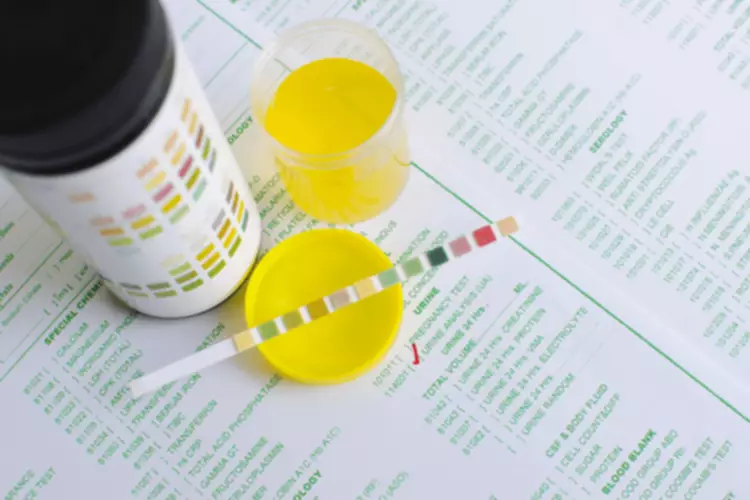Content
However, these drinks cannot be given the sole responsibility of cleansing. Drug testing kits offer a self-testing option, within the comfort of your house, with accurate results. Test kits for different drugs are available, including drug tests for marijuana, meth drug test, oxycodone, etc. These kits provide accurate toxins in the hair, blood, urine, or saliva sample and generate results within minutes.

Drug users, even recreational users, can be a victim of accidents, injuries, or death. According to The Centers For Disease Control And Prevention, 80% of drug overdoses are caused by opioids or a combination of various drugs. A result of 500 ng/mL is a strong indicator that the patient has used these drugs within the past three days.
How Long Do Amphetamines Stay in Your System?
Methamphetamine is a powerful, addictive, illegal drug that affects the central nervous system. People now make or “cook” meth in crude laboratories using various over-the-counter drugs and highly corrosive chemicals. The most common method uses pseudoephedrine or ephedrine, which are ingredients in many cold remedies. Cooking meth is highly dangerous because the fumes from the chemicals used are extremely toxic.
If the time is short and relying on natural detox plans is not enough, try a detox plan to speed up the natural cleansing process. Within a few hours, the body will remove drug particulates and remains. Use the home testing kits to confirm the absence of drugs in the body. For example, the meth drug test only shows its presence in the blood for up to four hours. On the contrary, the drug test for marijuana using urine gives a profile of up to 30 days. Drug tests are fairly common and are conducted for a variety of reasons.
Mental Health Conditions
These tests are easy to fool, with synthetic urine or a urine additive to fake the results. The supervisor may not be watching you urinate, but he will be present in the same room or around, leaving very little chance of contaminating the sample. During these tests, there is a supervisor to watch you urinate, making sure you are not cheating.
- Another specific danger of Cocaine use is that street dealers may mix the substance with other drugs like Amphetamines or Fentanyl to increase profits.
- Estimating the detection time of a drug in urine is complex because of many different influencing factors and the lack of experimental data.
- Hair structure, growth rate, melanin content, hygiene, and cosmetic hair treatment may affect the concentration of drugs in the hair.
Similarly, nail drug testing can be used to provide an overview of up to 12 months for drug use (six months for fingernails and 12 months for toenails). People with ADHD may also experience restlessness or may act impulsively. Amphetamines activate nerve cells in the brain and spinal cord to increase mental focus, alertness and concentration. Contrary to the short-lived effects of cocaine, which affect the body in a nearly identical way, the effects of amphetamines can last for hours after intake. Additionally, mixing amphetamines with alcohol and other drugs magnifies the effects.
Street Names for Speed
Other people try to use household chemicals as a way to alter their drug results. Yet, new testing helps to limit the effectiveness of any method. There are some limitations to using hair as a detection method. Darker hair typically has more methamphetamine in it than those who how long do amphetamines stay in your system may have a lighter color hair. That happens just because the drug tends to bind better with darker colors. Other factors play a role in accuracy, too, such as if a person uses chemical treatments on their hair, the growth rate of hair and a person’s overall hair hygiene.
Generally, it’s titrated at weekly intervals to ensure that it’s well-tolerated. Your doctor should regularly reevaluate your prescription to ensure its long-term usefulness for reducing your symptoms. Meth addiction is a serious problem with potentially severe consequences.
Learning Center
This medication is a controlled substance and should be kept in a secure, safe place in a tightly closed container. The maximum recommended dose for children 6 to 12 years of age is 30 mg per day. Doses greater than 30 mg per day have not been studied in children, and Adderall XR has not https://ecosoberhouse.com/ been studied in children under 6 years of age. Patients who are taking divided doses of immediate-release Adderall (such as twice daily) may be switched to Adderall XR at the same total daily dose taken once daily. If symptoms occur, discontinuation of treatment may be appropriate.
Additional risks of taking Propoxyphene include cardiac arrest, irregular or abnormal heartbeat (arrhythmia), slow heart rate (bradycardia), and congestive heart failure. Propoxyphene still circulates on the street market, so the risk of abuse and addiction is still present. For example, the high from LSD lasts 6 to 12 hours, but the high from Cocaine lasts about minutes. The same is true for how long a drug stays in the body’s systems, even after the effect has worn off. Stimulant medications can increase blood pressure and average heart rate.
